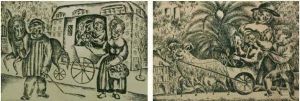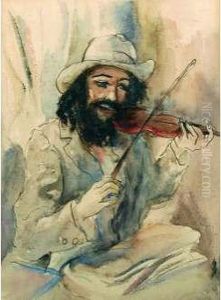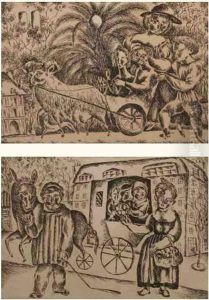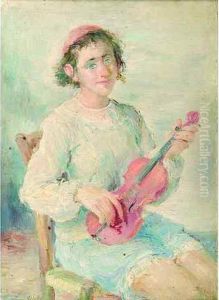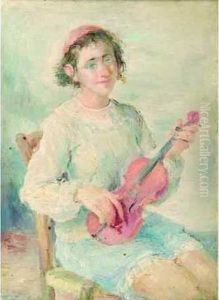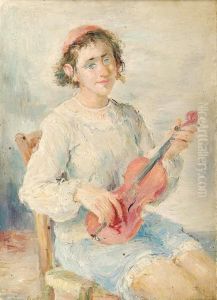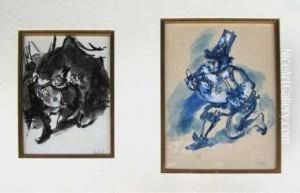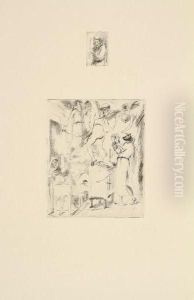Jacob, Jacques Balgley Paintings
Jacob Jacques Balgley, better known as Jacques Balgley, was a Jewish painter of Belarusian origin who was born in 1881 in Minsk and passed away in 1936. His artistic journey reflected the broader narratives of Jewish artists in the late 19th and early 20th centuries, who often navigated between their cultural roots and the Western art movements of their times.
Balgley's early life was influenced by the rich cultural tapestry of the Russian Empire, where Jewish communities had their own distinct artistic and cultural traditions. Despite the challenges posed by the restrictions of the Pale of Settlement and the frequent anti-Semitic sentiments of the period, Balgley pursued his passion for art. His early work was shaped by the academic traditions prevalent in Eastern Europe, with an inclination towards realism and a focus on capturing the daily lives and struggles of people, particularly within Jewish communities.
As Balgley's career progressed, he moved to Western Europe, like many of his contemporaries, seeking greater artistic freedom and inspiration. During this period, he was exposed to various Western art movements, including Impressionism and Post-Impressionism, which influenced his work. He began to experiment with color and form, gradually moving away from the strictures of his academic training. His paintings from this period reflect a blend of his Eastern European roots and the modernist trends that were sweeping through the Western art world.
Balgley was also part of the larger Jewish artistic diaspora that contributed significantly to the cultural life of Paris in the early 20th century. The city was a hub for artists and intellectuals, and it provided a fertile ground for Balgley to further develop his artistic voice. His work from this period reveals a greater confidence in his use of color and a looser, more expressive approach to brushwork, characteristics that were hallmarks of the evolving modernist aesthetic.
Unfortunately, Jacques Balgley's life and career were cut short when he died in 1936. He did not live to see the further horrors that would befall Europe and its Jewish populations during the Second World War. His body of work, however, remains as a testament to the rich cross-cultural exchanges that defined the art world of the late 19th and early 20th centuries, and to the unique perspective of Jewish artists of the time. Balgley's paintings are appreciated for their historical context as well as their artistic merit, contributing to the understanding of the era's complex cultural and social dynamics.
